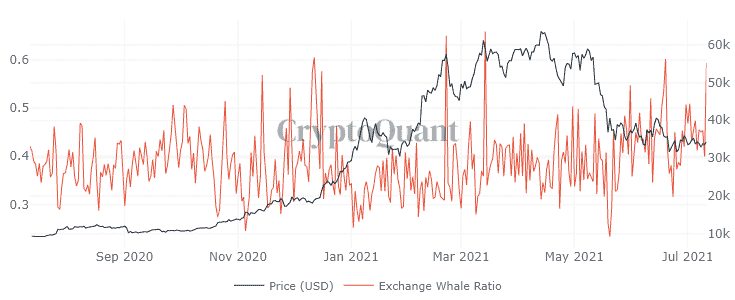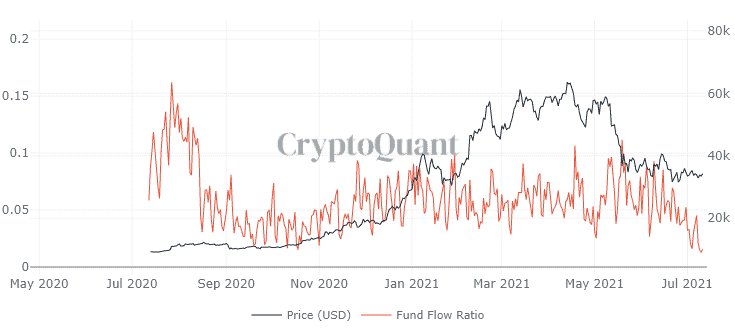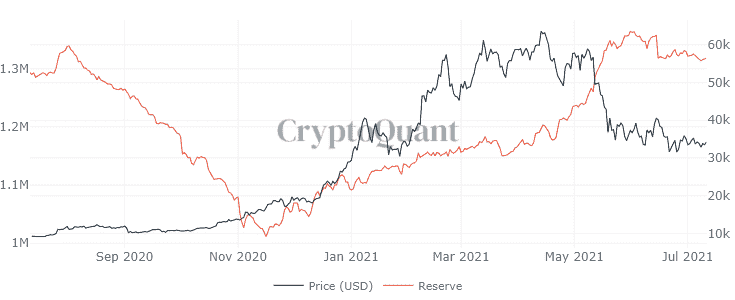There it is again, the institutional FUD. And again it’s Guggenheim CIO Scott Minerd who wraps himself in bear fur. The over-the-counter Bitcoin transfers are at a record level. How does that fit together?
Scott Minerd can’t really make up his mind: The Chief Investment Offiver (CIO) of asset manager Guggenheim has once again made a “forecast” about the Bitcoin rate – and it always sounds more bearish. Compared to the US television station CNBC Minerd got the Bitcoin Bear last Friday mimed. He sees the market in the process of a massive correction that could more than halve the Bitcoin price again.
When we look at the history of crypto and we see where we are [glaube ich wirklich,] that this is likely a crash. And you know a crash would mean we’d fall 70-80% what [einen Bitcoin-Kurs] would mean between 10 and 15 thousand
so to Minerd CNBC. The asset manager consequently recommends speculating on a falling Bitcoin price.
Put it this way, I would be in no rush to buy Bitcoin and I see no reason to own it now. If you wanna be a speculator speculate it’s going down
so Minerd’s investment recommendation.
A rogue who thinks that the institutional investor wants to conjure up a cheaper entry-level Bitcoin rate with his black or red painting. This is supported by the fact that the Guggenheim CIO only put forward the thesis of the “true Bitcoin floor” at USD 15,000 in mid-June, but did not want to put aside its bullish long-term outlook for a Bitcoin rate of up to USD 600,000.
In addition, Guggenheim registered a new fund with the US Securities and Exchange Commission at the beginning of June. By doing Request there is explicit mention of possible investments in Bitcoin and Co.
The Fund may have investment exposure to cryptocurrencies (particularly Bitcoin), often referred to as “virtual currency” or “digital currency”, […] strive for
Of course, derivatives are also part of the planned crypto exposure of the planned Guggenheim fund. In other words: Not only direct investments, but also bets on falling prices using futures and other investment vehicles are what you want to keep open.
With this in mind, minerds’ statements should be treated with caution. Above all, the statement that the Guggenheim CIO currently sees “no reason” to buy Bitcoin, bites itself with the six-figure price scenario that it already rumored in December 2020.
Is the Bitcoin Crash Coming? That’s what the data says
The bare numbers only partially support Minerd’s thesis of another crash. His reasoning seems to be based solely on the fact that the Bitcoin price has crashed more strongly in the past than it did when it fell from the all-time high at around USD 64,000. Compared to this, BTC has lost around 50 percent at the current price of 34,000. Should the past repeat itself, there would be room for improvement. However, some of the on-chain data collected by Cryptoquant also speak in favor of increased sales pressure from the side.
For example, the number of BTC on the wallets of crypto derivatives exchanges is still at a high level, at over 1.3 million BTC. An increase in this metric tends to mean that more BTC is kept available for selling, buying altcoins, and margin trading.
As far as the “whale transactions” on Bitcoin exchanges are concerned, at first glance it looks like a selling mood among institutional investors. For example, the relative size of the 10 largest Bitcoin transactions in relation to the total inflow to exchange wallets on July 11th showed a strong swing to the north. As can be seen from the Cryptoquant chart, such peaks in this metric, the so-called “whale ratio”, have led to a correction more frequently in recent months.

Selling pressure with simultaneous accumulation?
Now the crypto space and the traditional investment business have one thing in common: The really big deals are often made outside the order books, i.e. over the counter. And here a metric from Cryptoquant makes you sit up and take notice. The “Fund Flow Ratio” describes the ratio of Bitcoin transactions associated with exchange wallets to the total number of BTC transfers that were registered on the blockchain in the same period. A low value means high activity in over the counter (OTC) trading. There is definitely bullish news from this front. The fund flow ratio is at its lowest level since data collection began around a year ago.

Nothing prevents the “institutional” from parking Bitcoin on exchanges at the same time and stocking up over the counter at the same time. You always have to keep that in mind when an “Insti” predicts the downfall of the crypto country. DYOR should remain the top priority.
